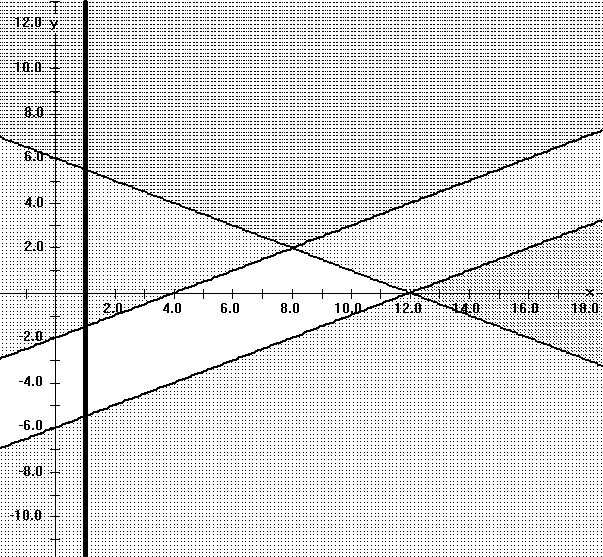Due Friday, Feb. 8 .
- Read Section 10.7 of Stewart especially Example 1, parts a and
b related to
- Suppose R(0)=100 and W(0)=10 in Equation 1. Estimate R(4) and W(4) using Euler's method with n = 4 with the following choices for the constants a,b,k, and r. In each case discuss the quality of your estimate and the relation of these to part a and b ot Example 1 of Stewart..
- a = b = 1, k = 2, r = .5 .
- a = .2, b =.5, k = r = 1.
Equation 1: dR/dt = kR - aRW dW/dt = -rW + bRW.
Read pages 624-626 on Euler's method together with materials from Flashman on Euler's method .
Due Friday, Feb 22.
- Paramatrize the graph of y = f(x) with x = t and y = f(t).
- Find where the graph of y = ln(x) has its largest curvature.
Prove that the curvature of the graph of f at (x, f(x) is given by the formula
k (x) = |f '' (x)| / [1 + (f'(x)2] 3/2 .
15.3: 70,72
15.4: 38
Due Friday, March 29
1. a. A real valued function of two variables, f::R2->R is called homogeneous of degree m if for any real numbers x,y,and t,
b. Generalize your result to homogeneous differentiable functions of 3 and 4 variables.
2. The temperature distribution on a metal plate at time t is given by the function H t of x and y:
a) Describe the motion of the particle if it is located at (0,0) when t=0 and adjustments are made when t = 0,1,2,3,4,... etc.
b) Describe the motion of the particle if it is located at (0,0) when t=0 and adjustments are made when t = 0,1/2,1,3/2,2,... etc.
Suppose T is a triangular region in the plane.
Suppose L(x,y) = Ax + By where A and B are constants that are not both 0. Use the LaGrange theory to explain why the maximum (or minimum ) values of L for the region T will occur at one of the vertices of the triangle.
State and justify the analogous result for planar regions bounded by quadrilaterals and pentagons.
Apply this work to find the maximum and minimum values of L(x,y) = 3x + 5y when (x,y) satisfy all the following (linear) inequalities:
x - 2y < = 12; 12 > = x + 2 y; 4 < = x- 2y ; and 1 < = x. [ revised 4-11 old version had 12 < = x + 2 y]

3 Bonus Points: Generalize this problem to one of the following
situations:
a. A tetrahedron in
space with L(x, y, z) = Ax + By + Cz.
b. A planar region
bounded by a polygon with n sides.
Justify your statement and illustrate it with an example.